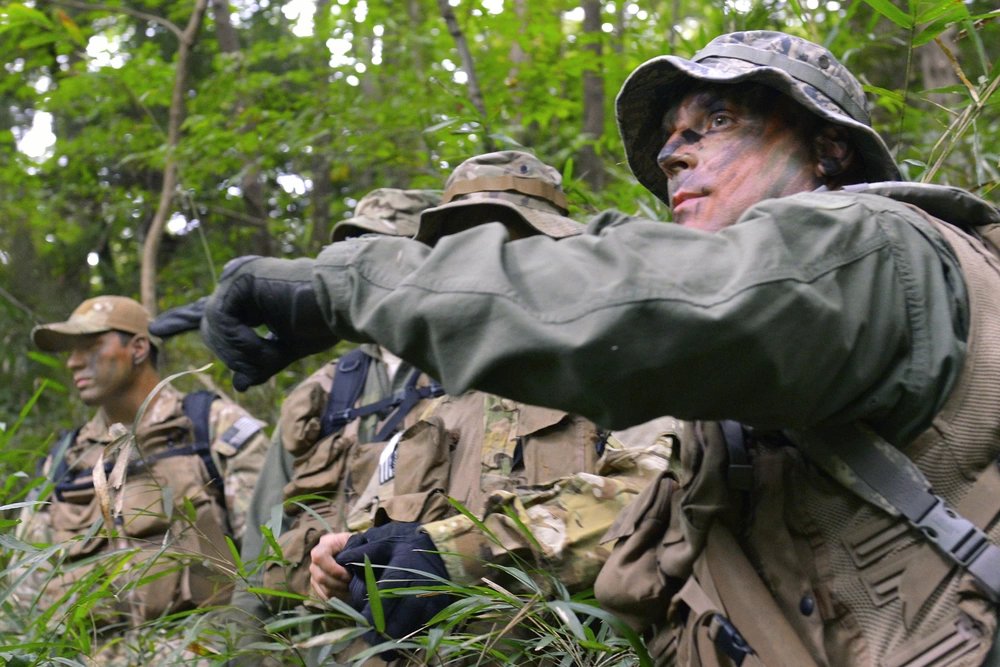Say you’re taking an adventurous hike off the beaten path. Your trail map isn’t making a lot of sense. The sun is starting to dip below the mountaintops and there’s a chill in the air. You brought enough supplies for a day hike, and that’s it. What do you do? Hope for the best, but prepare for the worst. If night is only a few hours off and you’re too mixed up or far away to make it back to the car, get ready to spend the night in the wild. If chipmunks can do it, so can you! These are the top 10 survival skills you should have to stay safe on your accidental adventure.
1. Finding and purifying water
Feeling a bit peckish? Too bad. Snacks are not your first order of business. Even people who are slim can go for weeks without food, but only a few days without water. Prioritize what will kill you first! To find water, start simple. Listen for the sounds of fresh, flowing water. If you don’t hear anything, follow the animals. They’re better at this than you are! Look for animal tracks, or note what direction birds are flying in the early morning.
Since water flows downhill, head towards low spots and you’ll likely find water. From there, purifying it is a must. Boiling water works well, but not many people carry a pot on day hike. Instead, plan ahead and bring purification tablets or a Life Straw. Alternatively, you can use one of these methods to collect water that’s already safe to drink.

2. Building a fire and keeping it lit
Keeping matches or flint in your backpack makes this step infinitely easier. There are multiple ways of starting a fire without either, so let’s start with the simplest. Remember that psychotic neighbor kid who liked to burn ants? That works on twigs and leaves, too. If you have a magnifying glass, a pair of glasses, or even ice, you can start a fire just by focusing the light of the sun on some dry kindling. Most of these methods are a little trickier, but they’re worth a try if you’re in a pinch.
3. Staying warm without a fire
If it’s pouring rain, building a fire will be nearly impossible. To stay warm without, try to stay as dry as you can. Water will draw heat away from your body, cooling you down faster. Layer clothing to create insulating pockets of air, but don’t let yourself get too hot either! Sweating will cool you down, so try to shed layers if you start feeling warm. It’s also a good idea to place something between your body and the ground for extra insulation.

4. Selecting an ideal location to make camp
Head uphill and look for spots with natural shelter, like large boulders. Thick trees can also provide some protection against the wind. Avoid low areas near water since they may be prone to flash flooding, and steer clear of areas with tall grass that might be home to venomous snakes that could make your impromptu night in the woods a whole lot scarier.
5. Building an appropriate shelter
Your options for shelter depend on what supplies you have. A survival knife or hatchet and a tarp will make things so much easier. If you don’t, you can try building a simple lean-to with branches and debris that will provide at least some barrier against the elements. There are lots more options, too!
6. Navigation, with a compass and without.
Navigating with a compass should be pretty self-explanatory. If you can’t use a compass, you probably shouldn’t be wandering through the woods to begin with. If you didn’t bring one, navigation depends on what part of the world you’re in. The sun does always rise in the east, so that can give you some sense of where you are.

7. Finding and prepping food
Fish, birds, and even non-venomous snakes make for decent meals if you can catch them. If not, try foraging. Look for edible plants and insects, but if you don’t know what it is, don’t eat it! Avoid unfamiliar plants and anything with more than six legs. Not that you wanted to eat a spider anyway. Whatever you find, cooking it will make it safer to eat and easier to digest.
8. Avoiding injury
First aid skills are important, but it’s better not to need them. Your biggest tool here is awareness. Be aware of your surroundings, and be aware of your own conditioning. Don’t push past your personal limits unless it’s 100% necessary for survival. If you push yourself to exhaustion, you’ll start slipping. In your weakened state, you’ll be less agile and more prone to injury. Your decision making skills will also suffer. Self-care in the wild is a luxury, not a necessity! Here are some more tips in case you need them.
9. Applying first aid correctly when needed
If you don’t know basic first aid, take a class before heading into the wilderness. Your backpack should have a first aid kit in it even for short excursions. These are some great tips to keep in mind if you manage to slice open your leg or burn yourself miles from a hospital. The short version: Stop bleeding with pressure and keep wounds clean and covered to prevent infection.
10. How to make rope
When you’re trying to build a shelter, rope is an exceedingly useful tool to have. Learn to make your own, or save yourself the trouble and pick up one of these paracord survival belts.

